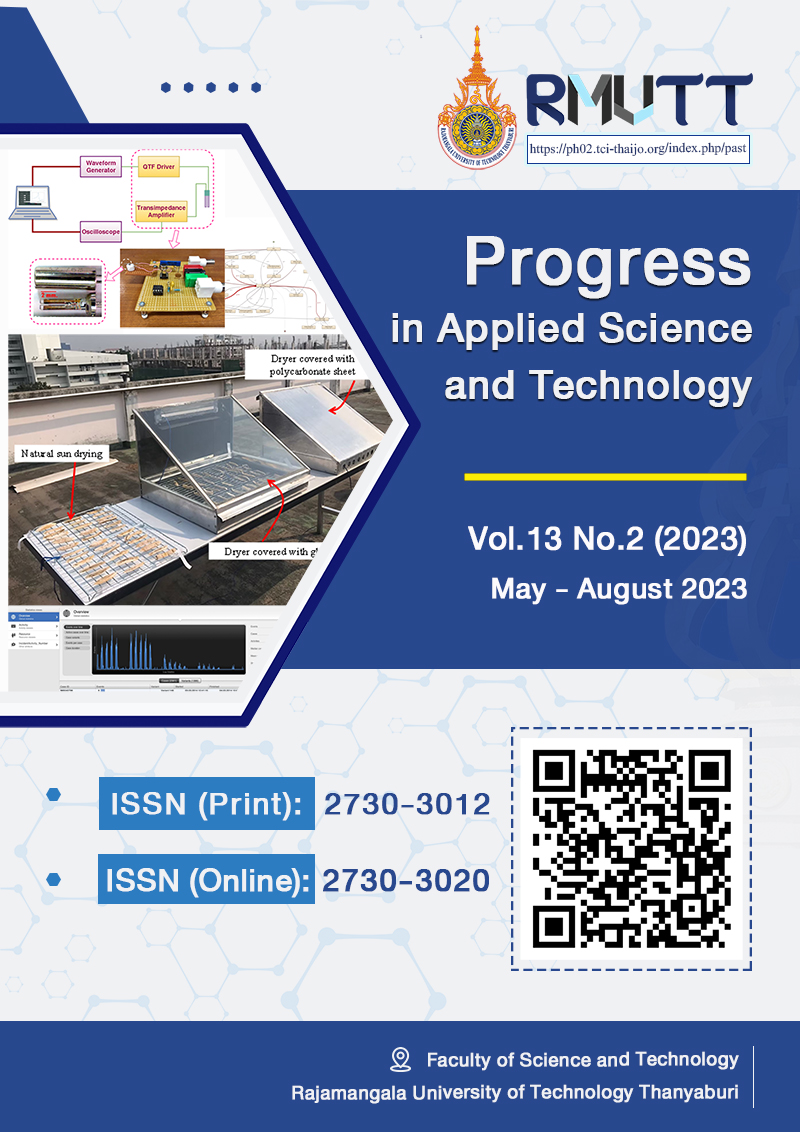Bootstrap Methods for Estimating the Confidence Interval for the Index of Dispersion of the Zero-truncated Poisson-Shanker Distribution
Main Article Content
Abstract
The zero-truncated Poisson-Shanker distribution (ZTPS) has been introduced for count data, which is of primary interest in several fields. However, the construction of bootstrap confidence intervals for its index of dispersion (IOD) has not yet been studied. The bootstrap confidence intervals using the percentile, simple, biased-corrected, and accelerated bootstrap methods were proposed in this paper. A Monte Carlo simulation study was conducted to evaluate the performance of three bootstrap confidence intervals based on the coverage probability and average length of the bootstrap confidence intervals. The results indicate that attaining the nominal confidence level using the bootstrap methods was impossible for small sample sizes regardless of the other settings.
Moreover, when the sample size was large, the performances of all methods were not substantially different. The percentile bootstrap and the simple bootstrap methods perform well regarding coverage probability and average length for large sample sizes. However, calculating the percentile bootstrap method is easier than calculating the simple bootstrap method. In the end, real data sets from different fields were analyzed to verify the usefulness of the bootstrap confidence intervals. It is manifested that the results match those from the simulation study.
Article Details

This work is licensed under a Creative Commons Attribution-NonCommercial-NoDerivatives 4.0 International License.
References
Zhang Z, Shafer D. Introductory statistics: Flatworld Knowledge; 2014.
Kissell R, Poserina J. Optimal sports math, statistics, and fantasy: Academic Press; 2017.
Andrew FS, Michael, RW. Practical business statistics: Academic Press; 2022.
Siegel AF. Practical business statistics: Academic Press; 2016.
Sangnawakij P. Confidence interval for the parameter of the zero-truncated Poisson distribution. J. Appl. Sci. 2021;20(2):13-22.
David F, Johnson N. The truncated Poisson. Biometrics. 1952;8(4):275-285.
Hussain T. A zero truncated discrete distribution: Theory and applications to count data. Pak. J. Stat. Oper. Res. 2020;16(1):167-190.
Shanker R. The discrete Poisson-Shanker distribution. Jacobs J Biostat. 2016;1(1):1-7.
Shanker R. Shanker distribution and its applications. Int. J. Stat Appl. 2015;5(6):338-348;
Lindley DV. Fiducial distributions and Bayes’ theorem. J. R. Stat. Soc. Ser. B. 1958;20(1):102-107.
Ghitany ME, Al-Mutairi DK, Nadarajah S. Zero-truncated Poisson-Lindley distribution and its application. Math. Comput Simul. 2008;79(3):279-287.
Shanker R. A zero-truncated Poisson-Amarendra distribution and its application. Int. J. Prob. Stat. 2017a; 6(4):82-92.
Shanker R. Zero-truncated Poisson-Akash distribution and its applications. Am. J. Math. Stat. 2017b;7(6):227-236.
Shukla KK, Shanker R, Tiwari MK. Zero-truncated Poisson-Ishita distribution and its application. J Sci Res. 2020;64(2):287-294.
Wikiwand, Index of dispersion. Available from: https://www.wikiwand.com/en/
Index_of_dispersion (Accessed on 10 June 2023).
Wood M. Statistical inference using bootstrap confidence intervals. Significance. 2004;1(4):180-182.
Shanker R. A zero-truncated Poisson-Shanker distribution and its applications. Int. J. Stat. Appl. 2017c;7(3):159-169.
Henningsen A, Toomet O. maxLik: A package for maximum likelihood estimation in R. Comput. Stat. 2011;26(3):443-458.
DiCiccio TJ, Efron B. Bootstrap confidence intervals. Stat. Sci. 1996;11(3):189-212.
Manoharan T, Arasan J, Midi H, Adam MB. Bootstrap intervals in the presence of left-truncation, censoring and covariates with a parametric distribution. Sains. Malays. 2017;46(12):2529-2539.
Efron B, Tibshirani RJ. An introduction to the bootstrap. New York: Chapman and Hall; 1993.
Efron B. Better bootstrap confidence intervals. J. Am. Stat. Assoc. 1987;82(397):171-185.
Meeker, WQ, Hahn GJ, Escobar LA. Statistical intervals: a guide for practitioners and researchers. New York: John Wiley and Sons; 2017.
Ihaka R, Gentleman R. R: a language for data analysis and graphics. J. Comput. Graph. Stat. 1996;5(3):299-314.
Robert CP, Casella G. Monte Carlo statistical methods, New York: Springer; 2004.
Kruskal WH, Wallis WA. Use of ranks in one-criterion variance analysis. J. Am. Stat. Assoc. 1952;47(260):583-621.
Turhan NS. Karl Pearson’s chi-square tests. Educ. Res. Rev. 2020;15(9):575-580.
Shanker R. Hagos F, Selvaraj, S. Yemane A. On zero-truncation of Poisson and Poisson-Lindley distributions and their application. Biom. Biostat. Int. J. 2015;2(6):168-181.
Finney DJ, Varley GC. An example of the truncated Poisson distribution, Biometrics. 1955;11(3):387-394.
Canty A, Ripley B. boot: bootstrap R (S-Plus) functions. R package version 1.3-28.1, 2022.
Kostyshak S. bootstrap: functions for the book “An introduction to the bootstrap”. R package version, 2019.6, 2022.
Murphy MV. semEff: automatic calculation of effects for piecewise structural equation models. R package version 0.6.1, 2022.
Kirby KN, Gerlanc, D. BootES: an R package for bootstrap confidence intervals on effect sizes. Behav. Res. Methods. 2013;45(4):905-927.






